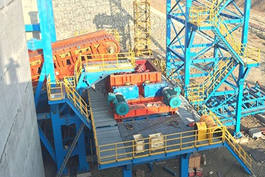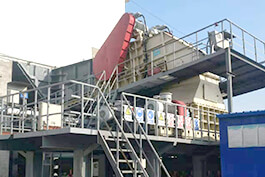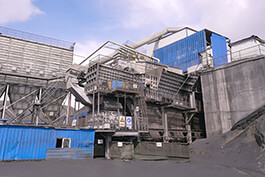Mineral Sizer Crushing Teeth
During the operation of the Mineral Sizer, the crushing teeth play a crucial role. They are not only the main working components of the Mineral Sizer but also typical vulnerable parts. The service life and work efficiency of the crushing teeth are directly related to the overall lifespan and operational efficiency of the Mineral Sizer. Additionally, they are closely linked to power consumption, production capacity, and the quality of the output particle size during the crushing process.
Different material categories for crushing require varying parameters for the Mineral Sizer's crushing teeth, such as material, shape, fastening method, and tooth height. Among the many factors affecting the service life of the crushing teeth, the structure, material, and fastening method are particularly critical. Among these, the rationality of the fastening method is the most important factor in determining whether the crushing teeth can work stably and efficiently.
Issues with the Current Fastening Method of Mineral Sizer Crushing Teeth
Traditional Fastening Method
Currently, some Mineral Sizer crushing teeth use a door-shaped (n-type) structure fastening method, where the tooth crown and the tooth ring seat are connected by bolts, with a wear-resistant layer welded onto the tooth crown. This structure meets basic crushing requirements for a certain period, but problems gradually appear as the usage time increases.
Damage Phenomenon
In actual operation, Mineral Sizer crushing roller teeth with this traditional fastening method often experience breakage. The contact surface between the crushing roller teeth and the tooth seat also tends to adhere to materials, which severely affects the normal operation of the Mineral Sizer.
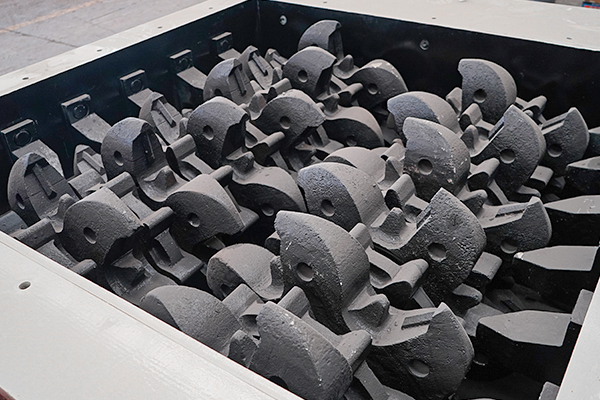
Causes of Damage
- When the bolts are not fully tightened, to meet assembly requirements, there is a gap fit between the two side surfaces of the tooth ring seat and the tooth crown. After the bolts are tightened, the pre-tightening force only acts on the tooth crown. Despite the large strength and stiffness of the door-shaped structure of the tooth crown, it cannot generate sufficient elastic deformation to eliminate the fit gap. As a result, the bolts can only tightly fit with the tooth crown and cannot fully fasten the two parts together.
- During the crushing process, the tooth crown will slide relative to the tooth ring seat, causing wear on the contact surface and further enlarging the gap. Even replacing the tooth crown cannot solve this problem. This puts the tooth crown and the bolts in an unfavorable stress state, shortening their lifespan and leading to frequent tooth breakage.
- If there are defects during the manufacturing process of the crushing roller teeth, it can cause inaccurate contact between the crushing roller teeth and the tooth seat, thereby worsening the stress state of the crushing roller teeth and accelerating damage.
- After changing the tooth crown's door-shaped structure to a groove-shaped one, although it is less prone to tooth breakage and has higher strength and stiffness, the bolt pre-tightening force still only acts on the tooth crown. The tooth crown can still loosen, causing wear at the connection site and reducing the service life of both the tooth crown and the tooth ring seat.
Improvement Measures for the Fastening Method of Mineral Sizer Crushing Teeth
Improvement Direction
To address the issues of crushing tooth breakage and material adhesion on the tooth ring seat, the fastening method of the crushing teeth needs to be improved to enhance its stress state and extend its service life. Additionally, the crushing roller teeth should undergo flaw detection to minimize casting defects.
Improvement Method
The improved fastening method for Mineral Sizer crushing teeth uses bolts to fasten only the tooth crown and the tooth ring seat along the tooth tip's rotating circumference in a single-sided surface connection. In this case, the pre-tightening force of the bolts acts simultaneously on both parts being fastened, and the resulting normal pressure is fully applied to the contact surface of the tooth ring seat and the tooth crown.
This frictional force overcomes the radial centrifugal force generated by the tooth crown during crushing, fully fastening the two parts together and preventing relative movement along the contact surface.
After fastening, the only gap between the two parts exists on the single-sided surface in the circumferential opposite direction of the tooth tip's rotation, which does not affect crushing. The two surfaces in contact bear the radial inward impact of the tooth crown, while the tightly contacted surface bears the circumferential forward impact.
Clearly, the improved fastening method and stress state of the Mineral Sizer crushing teeth are superior to the traditional structure.
Advantages of the Improved Fastening Method for Mineral Sizer Crushing Teeth
The improved fastening method for Mineral Sizer crushing teeth completely revolutionizes the traditional design concept, showing significant superiority compared to existing technology. In high-intensity operation scenarios of the Mineral Sizer, the new fastening method optimizes the mechanical force transmission path, making the force distribution on the crushing teeth more uniform.
This effectively avoids local stress concentration issues, greatly enhancing the fatigue resistance of the tooth structure, and ensures the Mineral Sizer remains stable and reliable during long hours of continuous crushing operations.
The new design also performs excellently in terms of manufacturing processes. The key surfaces that need to be machined have been simplified and optimized, greatly reducing machining difficulty and aligning with the high-efficiency production needs of modern mechanical manufacturing. In actual application scenarios, the convenience of maintenance for Mineral Sizer equipment has been greatly improved.
The improved crushing teeth feature a modular design with user-friendly installation interfaces, allowing technicians to complete installation and replacement work in a shorter time. This significantly reduces downtime for maintenance, ensuring the continuous and efficient operation of the Mineral Sizer and providing a solid and reliable technical support for material crushing operations in industries like mining and building materials.
Application Prospects of the Improved Mineral Sizer Crushing Teeth Technology
This improved Mineral Sizer crushing tooth structure, with its outstanding advantages of high wear resistance, easy maintenance, and strong stability, will reshape the mining crusher industry. In large-scale mining operations in open-pit mines, the Mineral Sizer, with its optimized tooth structure, can achieve more efficient primary crushing of ores.
In underground mining scenarios, its lightweight design and quick replacement characteristics can significantly reduce downtime for maintenance and improve overall production pace. As the intelligent transformation of mines accelerates, this Mineral Sizer crushing tooth, compatible with digital monitoring systems, will become a key piece of equipment for reducing costs and increasing efficiency in modern mining production, helping the industry move towards a greener and more efficient direction.
Conclusion
The fastening method of the Mineral Sizer crushing teeth has a decisive impact on its performance and service life. The traditional fastening method has numerous drawbacks, while the improved fastening method effectively solves these issues, significantly enhancing the Mineral Sizer’s working efficiency and stability.
As the mining industry continues to develop, this advanced crushing tooth fastening technology will play an increasingly important role in pushing the mining crusher industry towards a new stage of development.



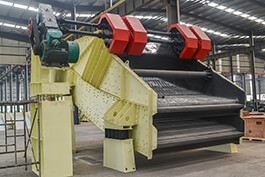

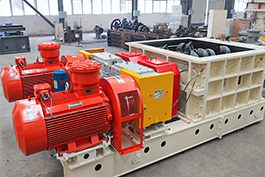
.jpg)
